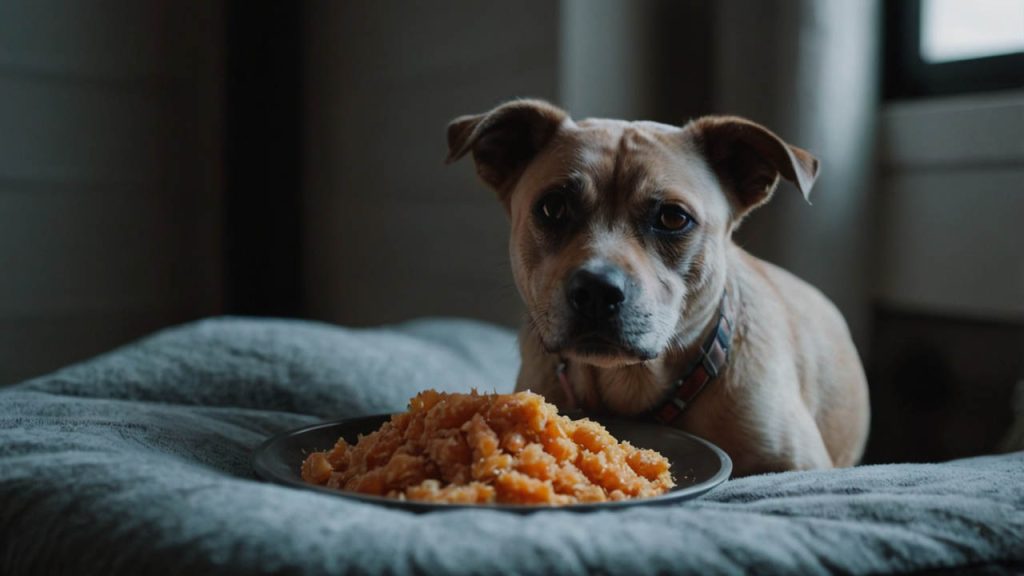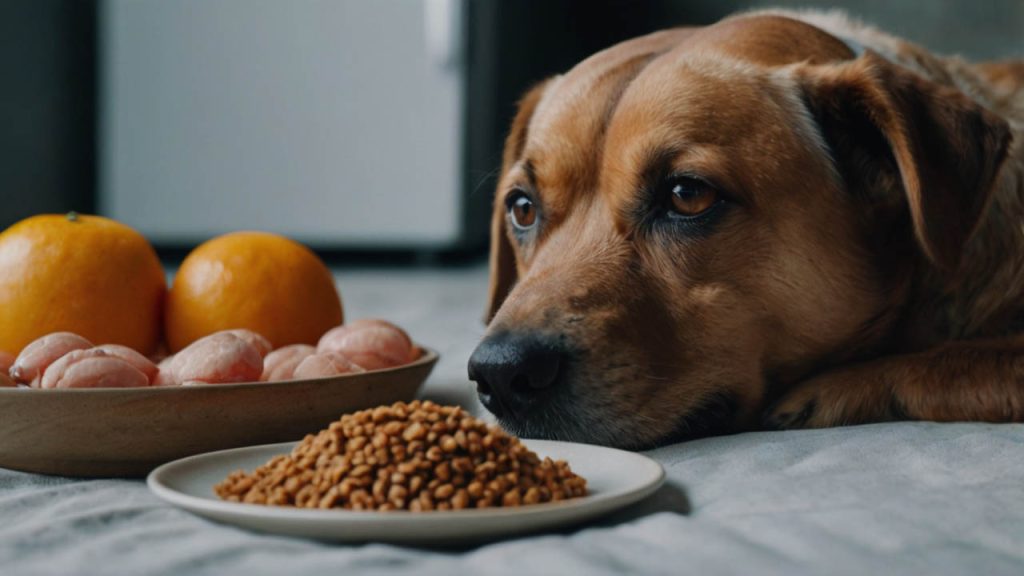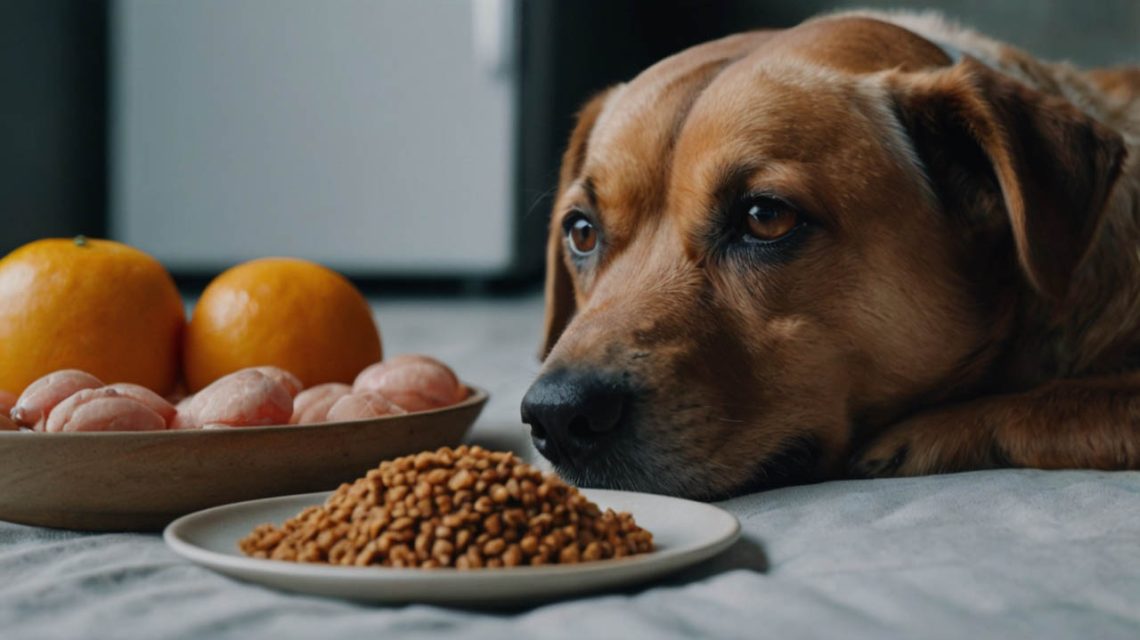What to Feed a Sick Dog: Your Complete Guide to Nursing Them Back to Health
It’s a heart-wrenching experience for any pet owner: your normally boisterous, food-loving companion is lethargic, unwell, and showing no interest in their food bowl. In that moment of worry, the first question that floods your mind is, what to feed a sick dog? Providing the right nutrition is one of the most critical steps you can take to support their recovery. However, a sick dog’s digestive system is delicate and requires a special approach. Consequently, offering the wrong foods can inadvertently make the situation worse.
This comprehensive guide provides a complete storyline for nourishing your sick dog, from the first crucial step you must take before offering any food, to the vet-recommended bland diet, hydration tips, and the process of transitioning back to their normal food. Therefore, you can navigate this stressful time with confidence, knowing you are providing the best possible care for your beloved pet.
The Unskippable First Step: When to Call Your Veterinarian
Before we discuss any specific foods, we must establish the most important rule: always consult your veterinarian first. While this guide offers safe, generally accepted advice for mild digestive upset, it is not a substitute for professional medical care. Your vet can diagnose the underlying cause of the illness, prescribe necessary medication, and provide specific dietary recommendations tailored to your dog’s condition.
Call your vet immediately if your dog exhibits any of the following:
- Vomiting or diarrhea for more than 24 hours.
- Signs of serious pain or distress.
- Lethargy that is severe or worsening.
- Presence of blood in their vomit or stool.
- Refusal to drink water.
This expert guidance is paramount. The information here on what to feed a sick dog is designed to complement, not replace, your vet’s instructions. As the American Veterinary Medical Association (AVMA) emphasizes, a professional diagnosis is the key to a safe and speedy recovery.

Understanding Why Your Sick Dog Won’t Eat
A loss of appetite, or anorexia, is a common symptom in sick dogs. Understanding why this happens can help you approach the situation with more empathy and patience.
- Nausea and Pain: Just like humans, if a dog feels nauseous or is in pain, the last thing they want to do is eat. Their body is signaling them to rest the digestive system.
- Lethargy: Illness drains energy. The simple act of getting up, walking to the bowl, and eating can feel like a monumental effort for a very sick dog.
- Gastrointestinal Upset: For issues like gastroenteritis, the body’s natural response is to stop intake to allow the inflamed digestive tract to heal.
Therefore, your initial goal isn’t to force a large meal but to offer something gentle and enticing that can provide essential nutrients without further taxing their system.
The Bland Diet: The Core of What to Feed a Sick Dog
When your vet gives you the green light to offer food at home, the go-to solution is almost always a temporary bland diet. The purpose of this diet is to be easily digestible, low in fat, and soothing to the gastrointestinal system. This is the cornerstone of what to feed a sick dog.
The Classic Recipe: Boiled Chicken and White Rice
This simple, two-ingredient meal is the gold standard for a reason. It provides lean protein and easily digestible carbohydrates.
- Protein – Boiled Chicken: Use boneless, skinless chicken breast. Boil it in plain water until cooked through. Do NOT add any salt, oil, or seasonings. Once cooked, shred the chicken into small, bite-sized pieces.
- Carbohydrate – White Rice: Prepare plain white rice. Avoid brown rice, as its higher fiber content can be harder for a sick dog to digest.
- The Ratio: The ideal ratio is typically one part shredded chicken to two parts cooked white rice. This provides more binding carbohydrates to help firm up stool in cases of diarrhea.
Start by offering a very small portion—perhaps just a tablespoon or two—to see how your dog handles it. If they keep it down, you can offer another small meal a few hours later.
Protein Alternatives for the Bland Diet
If you don’t have chicken or if your dog has a poultry sensitivity, other lean proteins work well.
- Lean Ground Turkey or Beef: Choose the leanest option available (93% lean or higher). Boil the meat and drain off all the fat before mixing it with rice.
- Whitefish: Mild, flaky fish like cod or tilapia, boiled or steamed without any seasoning, can also be a good option.
Carbohydrate Alternatives for the Bland Diet
White rice isn’t the only option. In fact, some alternatives offer unique benefits.
- Plain Canned Pumpkin: Ensure it is 100% pure pumpkin, NOT pie filling. Pumpkin is a superfood for digestive upset. Its soluble fiber can help with both diarrhea (by absorbing water) and constipation (by adding bulk). You can mix a spoonful into the chicken and rice.
- Cooked Sweet Potato: Boiled and mashed sweet potatoes (with no butter, sugar, or salt) are another excellent, easily digestible carbohydrate source packed with vitamins.

Hydration: Just as Important as What to Feed a Sick Dog
Dehydration is a serious risk for a sick dog, especially if they are experiencing vomiting or diarrhea. Sometimes, getting them to drink is even more important than getting them to eat. If your dog isn’t drinking from their water bowl, you may need to get creative.
Creative Ways to Encourage Drinking
- Bone Broth: Offer a low-sodium, onion-free, and garlic-free bone broth. You can serve it on its own or pour a little over their bland diet meal to make it more appealing. The scent can often entice a reluctant dog.
- Ice Chips: Some dogs who refuse water will lick or crunch on ice chips. This is a gentle way to get fluids into their system.
- Water-Rich Foods: If your vet approves, a small amount of plain watermelon (with seeds and rind removed) can be a source of hydration.
This focus on hydration is a non-negotiable part of what to feed a sick dog.
How to Feed a Sick Dog: The Method Matters
It’s not just what you feed, but how you feed it that can make a difference. A sick dog needs gentle encouragement and a stress-free mealtime.
- Offer Small, Frequent Meals: Instead of two large meals, offer 4-6 very small meals throughout the day. This is much easier on a sensitive stomach.
- Warm the Food: Gently warming the food can release its aroma and make it much more enticing for a dog with a diminished sense of smell or appetite.
- Hand-Feeding: For some dogs, the comfort of being fed by hand can be the encouragement they need to take that first bite.
- Create a Calm Space: Serve their food in a quiet, comfortable area away from household traffic and other pets.
What NOT to Feed a Sick Dog: Foods to Strictly Avoid
When wondering what to feed a sick dog, knowing what to avoid is just as critical. The following foods can exacerbate their illness:
- Their Regular Kibble: Most commercial kibbles are too rich and hard to digest for a sick stomach.
- Fatty Foods: Avoid fatty meats, oils, butter, and cheese. Fat can trigger pancreatitis, a painful and serious condition.
- Spicy or Seasoned Foods: Anything you would eat is likely seasoned. Onions, garlic, salt, and other spices can be toxic or irritating.
- Dairy Products: Many dogs are lactose intolerant, and dairy can worsen diarrhea.
- Raw Food: A sick dog’s immune system is already compromised, making them more susceptible to bacteria like Salmonella or E. coli found in raw meat.
Sticking to the simple, vet-approved bland diet is the safest and most effective approach.
Transitioning Back to Their Regular Diet
Once your dog is feeling better—their appetite has returned, and they’ve had normal stools for at least 24-48 hours—you can begin transitioning them back to their regular food. Do this gradually to avoid upsetting their recovering digestive system.
- Day 1: 75% bland diet, 25% regular food.
- Day 2: 50% bland diet, 50% regular food.
- Day 3: 25% bland diet, 75% regular food.
- Day 4: 100% regular food.
If at any point the diarrhea or vomiting returns, go back to the 100% bland diet and consult your vet.
Conclusion: Your Partner in Their Recovery
Navigating a pet’s illness is stressful, but knowing what to feed a sick dog empowers you to be an active partner in their healing process. The journey starts with a crucial call to your vet, moves to a comforting and simple bland diet of boiled chicken and rice, prioritizes hydration, and finishes with a slow, careful transition back to normal. By providing this gentle nutritional support, you are giving your dog’s body the best possible chance to recover quickly and completely.
Have you ever had to nurse a sick dog back to health? What tips and tricks worked for you? Share your experiences in the comments below to help other pet owners!


